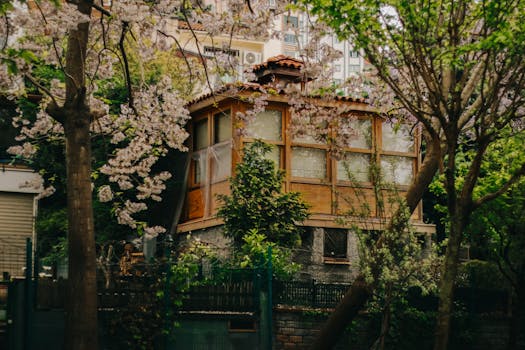
Urban Green Spaces: The Future of Outdoor Living in European Cities by 2025
Urban Green Spaces are becoming increasingly important in European cities as they provide a tranquil escape from the hustle and bustle of city life. Urban Green Spaces are not only beneficial for the environment, but they also have a significant impact on the mental and physical health of citizens. In this article, we will explore the future of outdoor living in European cities and how urban green spaces will shape it by 2025.
Introduction to Urban Green Spaces
Urban green spaces refer to any area in a city that is covered with vegetation, such as parks, gardens, and green roofs. These spaces are essential for maintaining biodiversity, reducing air pollution, and mitigating the urban heat island effect. Additionally, urban green spaces provide numerous benefits for citizens, including improved mental health, increased physical activity, and enhanced quality of life.
The Benefits of Urban Green Spaces
The benefits of urban green spaces are numerous and well-documented. Some of the most significant advantages include:
- Improved mental health: Spending time in nature has been shown to reduce stress, anxiety, and depression.
- Increased physical activity: Urban green spaces provide opportunities for outdoor recreation, such as walking, cycling, and sports.
- Enhanced quality of life: Urban green spaces can increase property values, improve air quality, and reduce noise pollution.
- Climate change mitigation: Urban green spaces can help to reduce the urban heat island effect, mitigate the effects of climate change, and improve air quality.
The Future of Outdoor Living in European Cities
By 2025, European cities are expected to be even more densely populated, with a greater emphasis on sustainability and green infrastructure. Urban green spaces will play a crucial role in shaping the future of outdoor living in these cities. Some of the trends that we can expect to see include:
- Increased investment in green infrastructure: Cities will invest more in green roofs, parks, and gardens to mitigate the effects of climate change and improve air quality.
- More emphasis on community engagement: Urban green spaces will be designed to facilitate community engagement and social interaction, with features such as public art, event spaces, and community gardens.
- Integration with transportation systems: Urban green spaces will be integrated with transportation systems, such as bike-sharing schemes and pedestrianized streets, to promote sustainable transportation and reduce congestion.
Case Studies: Successful Urban Green Space Projects in European Cities
There are many successful urban green space projects in European cities that demonstrate the potential of these spaces to transform outdoor living. Some examples include:
- The High Line in London: An elevated park built on an old rail line, providing a unique green space in the heart of the city.
- The Superkilen park in Copenhagen: A public park that incorporates green spaces, public art, and community facilities, promoting social interaction and community engagement.
- The Green Roof Initiative in Berlin: A program that incentivizes building owners to install green roofs, reducing stormwater runoff and improving air quality.
Conclusion
Urban green spaces are the future of outdoor living in European cities. By 2025, these spaces will play a crucial role in shaping the sustainability, livability, and resilience of cities. As we move forward, it is essential to prioritize investment in green infrastructure, community engagement, and sustainable transportation systems to create thriving, green cities that promote the well-being of citizens and the environment.


